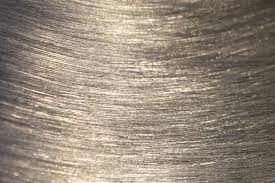We deal in almost all the metals which are available in the earth. Here are some specification like: Copper, Brushed Metal, Aluminium, Bronze, Gold, Iron, Pewter Antique metals refer to metals that are old and often have historical or cultural significance. These metals may have been used in various applications such as art, architecture, weaponry, and everyday objects. Some common antique metals include: These antique metals often acquire a distinct patina or aging over time, adding to their aesthetic appeal and historical value. Collectors often seek out antique metal objects for their beauty, craftsmanship, and historical significance.
The Metals we dealt in: Copper
Copper is a chemical element with the symbol Cu (Latin: cuprum) and atomic number 29. It is a ductile metal with excellent electrical conductivity and is rather supple in its pure state and has a pinkish luster which is (beside gold) unusual for metals which are normally silvery white. It finds use as a heat conductor, an electrical conductor, as a building material, and as a constituent of various metal alloys. Copper is an essential trace nutrient to all high plants and animals. In animals, including humans, it is found primarily in the bloodstream, as a co-factor in various enzymes, and in copper-based pigments. However, in sufficient amounts, copper can be poisonous and even fatal to organisms. Copper holds a significant place in the realm of antique metals due to its long history of use by various civilizations, its durability, and its unique aesthetic qualities. Here’s some more information about copper in the context of antiques: Overall, antique copper items offer a tangible connection to the past, providing insights into the lifestyles, technologies, and artistic traditions of earlier generations. Their enduring appeal makes them prized possessions for collectors and enthusiasts alike.
The Metals we dealt in: Brushed Metal
Brushed metal is metal that has been abraded (“brushed”), usually with a fine grit sandpaper. The brushing gives the metal a distinctive look, as it retains some but not all of its metallic lustre and is given a pattern of very fine lines. It can be compared to metal with several small scratches all running in the same direction. Commonly used metal for brushing include stainless steel and nickel. Brushed metal refers to a finishing technique applied to metals to create a textured surface characterized by fine parallel lines or “brush strokes.” This technique is achieved by brushing the metal surface with an abrasive material, typically in a consistent direction, which results in a uniform pattern of fine scratches. Brushed metal finishes can be applied to various metals, including stainless steel, aluminum, brass, and bronze. In the context of antiques, brushed metal finishes might not be as commonly found as other types of finishes due to the historical techniques and preferences prevalent during different periods. However, modern pieces designed to evoke antique aesthetics may incorporate brushed metal finishes to simulate the look of aged or weathered metal surfaces. Here are some points regarding brushed metal in the context of antique or vintage items: Overall, while brushed metal finishes may not have been widespread in historical antiques, they can play a role in contemporary designs aimed at capturing the essence of antique aesthetics or in restoration efforts to preserve the original character of vintage items.
The Metals we dealt in: Aluminium
Aluminum or aluminum is a silvery white and ductile member of the boron group of chemical elements. It has the symbol Al; its atomic number is 13. It is not soluble in water under normal circumstances. Aluminum is the most abundant metal in the Earth’s crust, and the third most abundant element therein, after oxygen and silicon. It makes up about 8% by weight of the Earth’s solid surface. Aluminum is too reactive chemically to occur in nature as the free metal. Instead, it is found combined in over 270 different minerals. The chief source of aluminum is bauxite ore. Aluminum, while not traditionally considered an “antique” metal due to its relatively recent discovery and widespread industrial use, still holds historical significance and can be found in antique items, albeit to a lesser extent compared to older metals like bronze, copper, or silver. Aluminum was once considered a precious metal, even more so than gold and silver, due to the difficulties involved in its extraction and refinement. In the 19th century, it was extremely expensive and was used sparingly for decorative purposes, such as jewelry and tableware, particularly during the Victorian era. One famous example of aluminum’s historical value is the capstone of the Washington Monument in the United States, which was made of aluminum in 1884 to showcase the metal’s prestige. At that time, aluminum was valued similarly to silver. However, with the invention of more efficient extraction methods, such as the Hall-Héroult process in the late 19th century, aluminum became much cheaper to produce, leading to its widespread use in various industries, including construction, transportation, and packaging. While antique items made entirely of aluminum might be less common compared to other metals, there are still collectors interested in aluminum artifacts from the late 19th and early 20th centuries, appreciating them for their historical significance and the craftsmanship of the time. These may include aluminum utensils, decorative pieces, and even early aluminum cookware.
The Metals we dealt in: Bronze
Bronze holds a significant place in the realm of antiques due to its historical importance, durability, and versatility. Here are some key points about bronze in respect to its antique value: Overall, bronze holds a special place in the world of antiques due to its timeless beauty, historical significance, and enduring appeal to collectors and enthusiasts alike.
The Metals we dealt in: Pewter
Pewter holds a significant place in the realm of antique metals due to its long history, versatility, and distinctive appearance. Here’s a closer look at pewter in respect to antiques: Overall, antique pewter holds a special place in the world of antiques, cherished for its historical significance, craftsmanship, and enduring beauty. Collectors and enthusiasts continue to appreciate and preserve these timeless treasures for future generations to enjoy.
The Metals we dealt in: Silver
Silver holds a significant place in the realm of antiques due to its beauty, versatility, and historical importance. Here’s a closer look at silver in respect to antiques: Overall, silver’s enduring allure as a precious metal, combined with its rich history and aesthetic appeal, ensures its continued prominence in the world of antiques.







